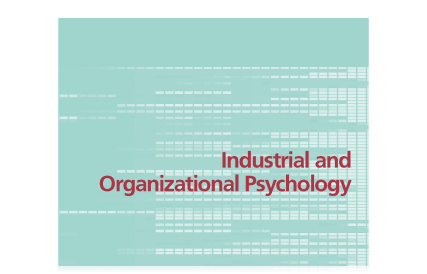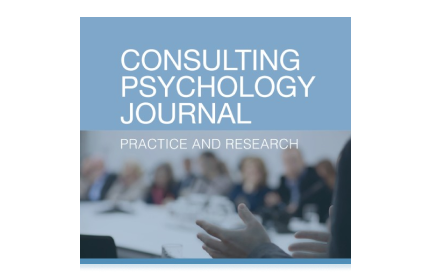Resources
Journal Articles
Resources
Journal Articles
Scholarly articles by Berman experts provide in-depth analyses on leadership development and organizational effectiveness, contributing valuable insights to the field.
The article "Berman - Coaching C-Suite and Founders 2019" by Bill Berman discusses the unique challenges and requirements of coaching C-suite executives and business founders. It emphasizes the importance of understanding both the business world and psychological expertise to effectively coach these high-performing leaders, using case examples to illustrate key points
The article "Executive Coaching and Consulting: Different Strokes for Different Folks" by William H. Berman and George Bradt explores the growing field of executive coaching, proposing a four-category model that includes facilitative coaching, executive consulting, restorative coaching, and developmental coaching. The authors emphasize the importance of understanding both business and psychological competencies to effectively address the diverse needs of corporate leaders
The article “Purpose-Driven” is Not Enough - HR Daily Advisor (Molinaro, Thompson) argues that while having a purpose is essential for organizations, it is not sufficient for long-term success. The authors emphasize the need for organizations to become purpose-enabled by building capabilities that align with their purpose, focusing on design, decisions, and delivery

The article "Naturalizing AI: Renewing Organizational Culture" discusses how a newly appointed CEO used Appreciative Inquiry (AI) to align the company's culture with its strategic goals by focusing on strengths and fostering innovation, decentralized decision-making, and faster product delivery. The approach involved engaging leaders at all levels in dialogues to create a shared vision and actionable strategies, ultimately embedding these changes into the organizational culture
Molinaro, M. (2018). Being on One’s Way – The Path to Leadership AI Practitioner
The article "Being on One’s Way: The Path to Leadership" by Michael Molinaro emphasizes that true leadership is not about holding a specific role but about engaging in meaningful actions and reflections that foster connections and drive organizational goals. It argues that leadership should be seen as a dynamic process that emerges through social interactions, future-oriented actions, and embodying organizational values

Gakovic, A., Molinaro, M, Pomerance, H. (2011) ISSN 1553-3735 Issue 32,8(4) Coaching the Culture Change at New York Life
The article “Coaching the Culture Change at New York Life” by Gakovic, Molinaro, and Pomerance (2011) explores the strategies and practices implemented to facilitate cultural transformation within the organization. It highlights the role of coaching in driving change, improving employee engagement, and fostering a more adaptive and resilient corporate culture.

The article "How Psychology Can Improve Your Meetings" by Nancy Branka explores how psychological principles can enhance the effectiveness of meetings by optimizing the environment, building stronger relationships through shared activities, and preventing unproductive behavior with clear objectives. It emphasizes the importance of strategic planning, engagement, and maintaining high energy levels to achieve meeting goals efficiently
This article presents the background and key recommendations of the 2003 Professional Preparation and Continuing Education for Beginning, Entry, Midlevel, and Senior Consulting Psychologists Report approved by the executive board of the Society. Brief reactions to the recommendations within the report from four consulting psychologists, each at a differing level of professional development corresponding to the levels used in the recommendations and each involved on the task force are involved. A final section of the article provides a response to the four reaction pieces. (PsycInfo Database Record (c) 2022 APA, all rights reserved

The article “Social Impact Authors: How & Why Bill Berman Is Helping To Change Our World” features an interview with Bill Berman, an executive coach and author of “Influence and Impact: Discover and Excel at What Your Organization Needs From You The Most.” Berman discusses his career journey, the importance of influence in the workplace, and shares insights from his book on how to become more influential and impactful at work. He also highlights the significance of understanding organizational culture and the role of mentors in professional development

The article “Lessons From Executive Coaches and Why You Need One” by Lepre-Nolan and Houde (2022) discusses the benefits of executive coaching for personal and professional development. It emphasizes how executive coaches can provide valuable insights, enhance leadership skills, and support individuals in achieving their career goals.

This article explores the potential benefits of integrating the fields of diversity in organizations and cross-cultural work psychology. It highlights key areas of commonality and differences between the two fields and suggests ways they can learn from each other's approaches and perspectives.

The article “The case for eclecticism in executive coaching: Application to challenging assignments” by Turner and Goodrich (2010) argues for a flexible, eclectic approach in executive coaching to effectively address complex and diverse client needs. It highlights how combining various coaching methods can enhance the coach’s ability to tailor interventions and achieve better outcomes in challenging coaching assignments.

The article “The State of Progress in Diversity and Inclusion Initiatives: Perspectives for Consulting Psychology” by Ferdman (2020) reviews the advancements and ongoing challenges in diversity, equity, and inclusion (DEI) within consulting psychology. It emphasizes the need for sustained, systematic efforts to integrate DEI principles into consulting practices to enhance organizational effectiveness and social justice123.
The article “In Trump’s Shadow: Questioning and Testing the Boundaries of Inclusion” by Ferdman (2018) explores the challenges and opportunities for inclusion created by the election of Donald Trump as the 45th President of the USA. It examines the limits of inclusion, alternative perspectives, and approaches for sustaining attention to and fostering inclusion in diverse contexts123.

Explores the differences in implicit and explicit attitudes among various sexual orientation groups. The study aims to understand how these attitudes vary and what implications they might have for social interactions and perceptions within diverse contexts.
